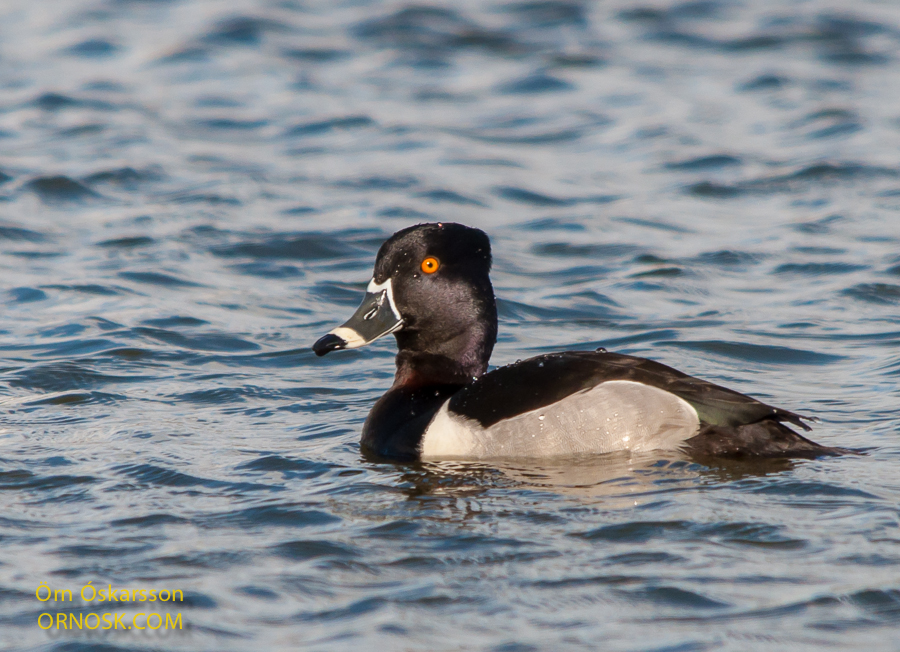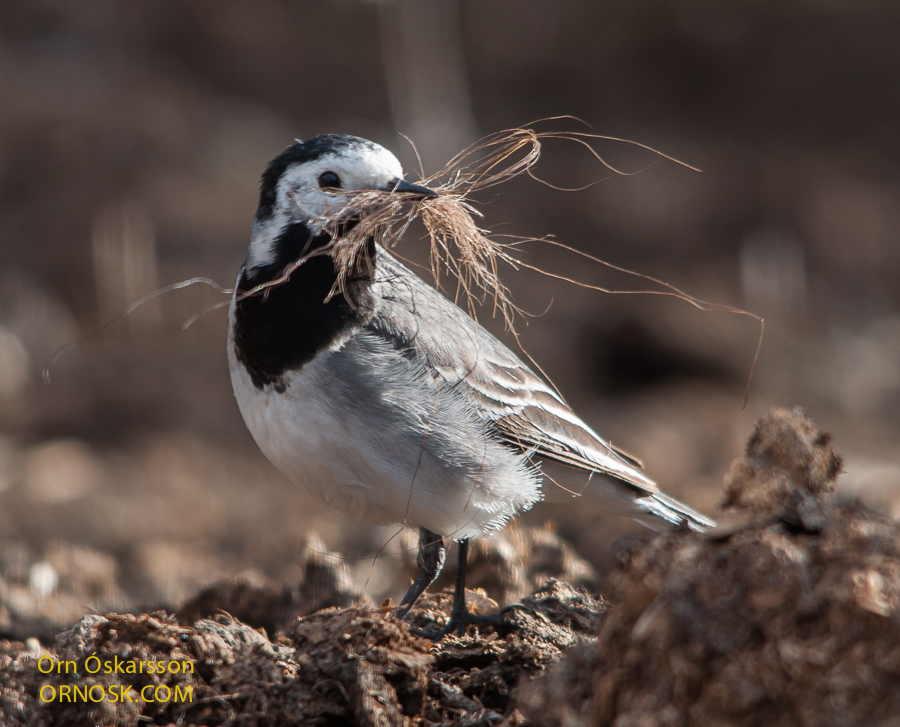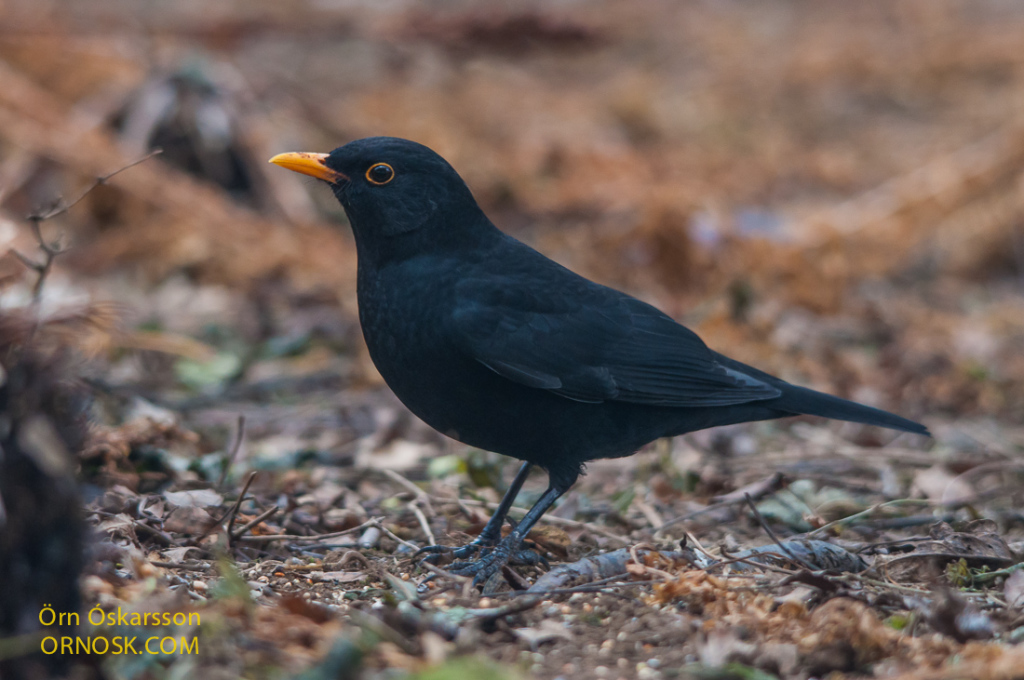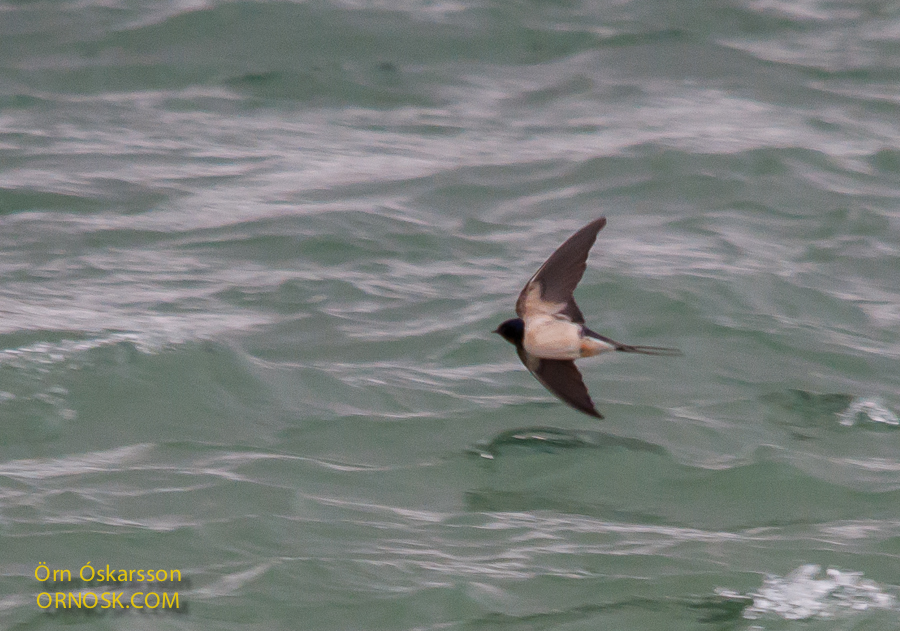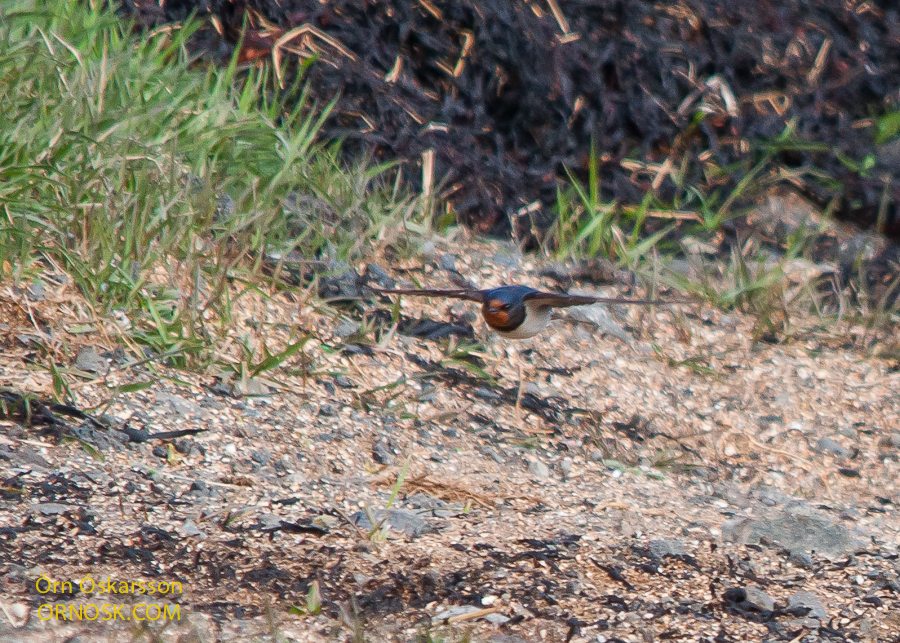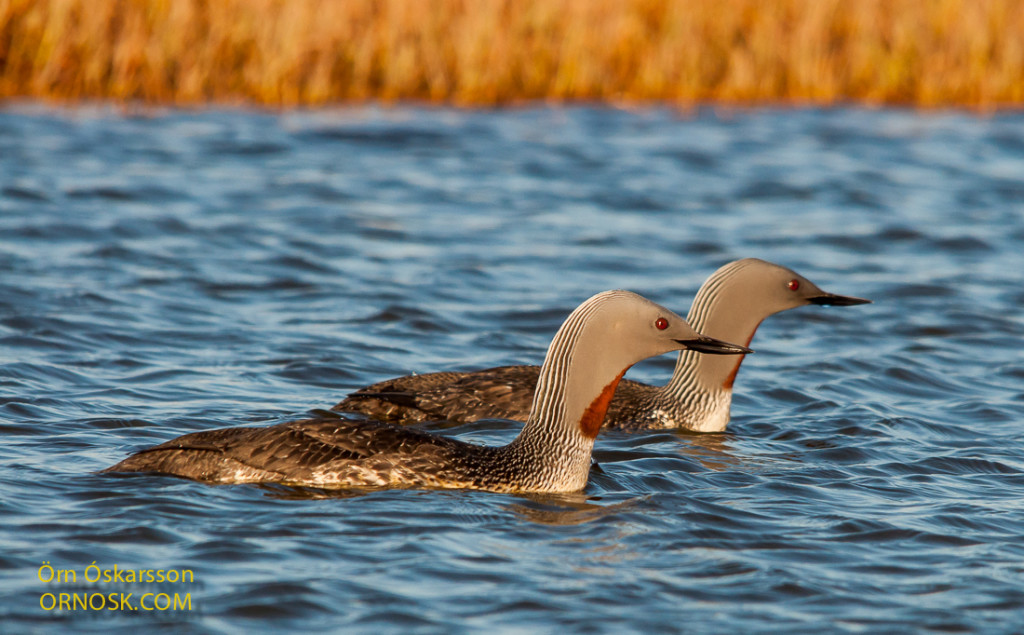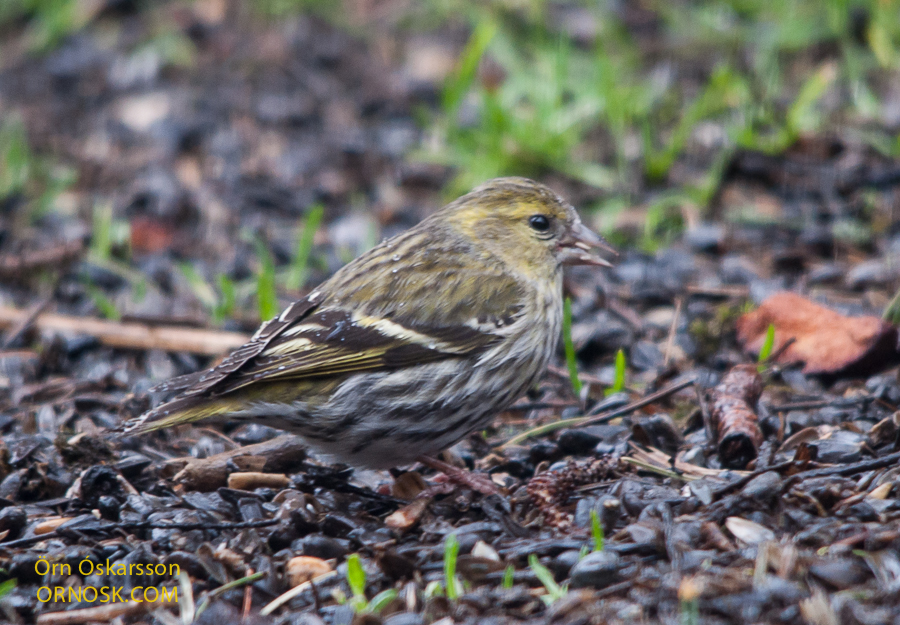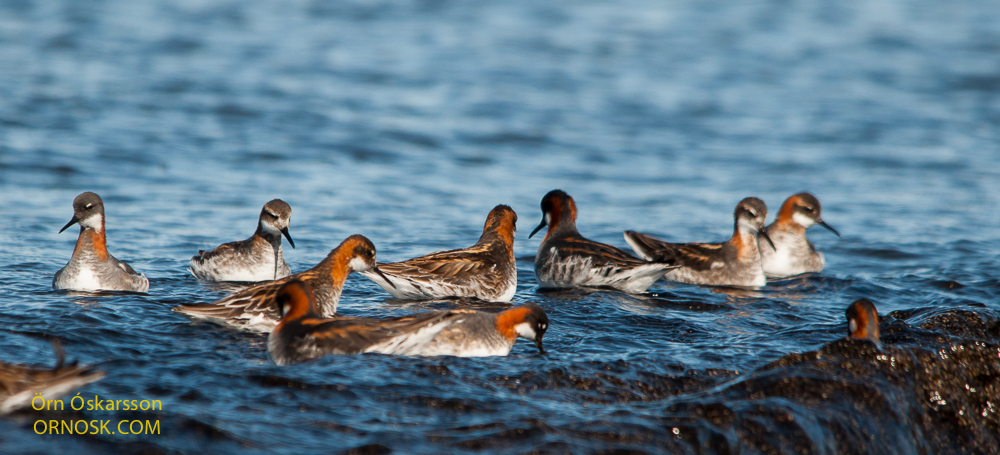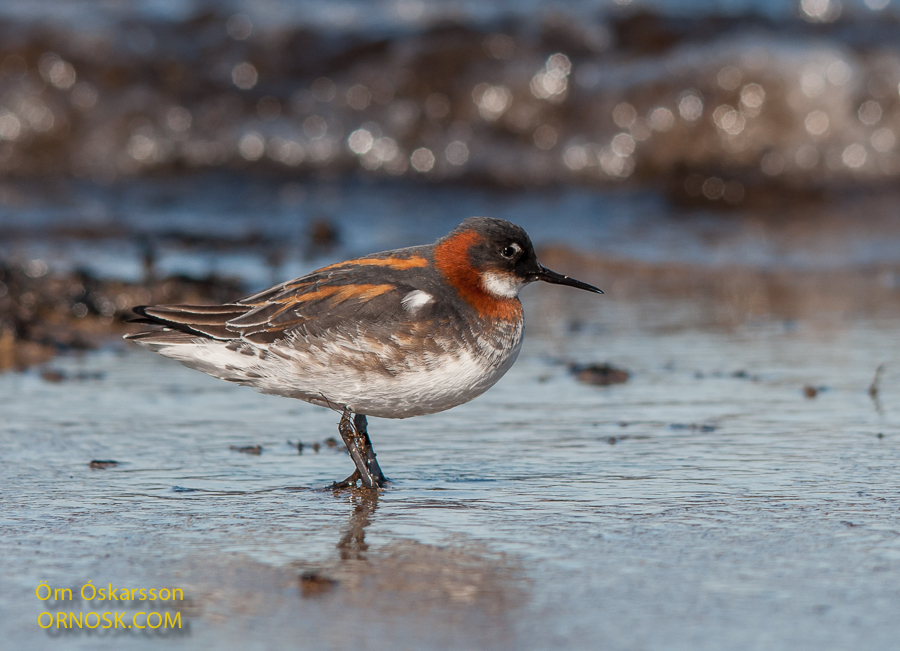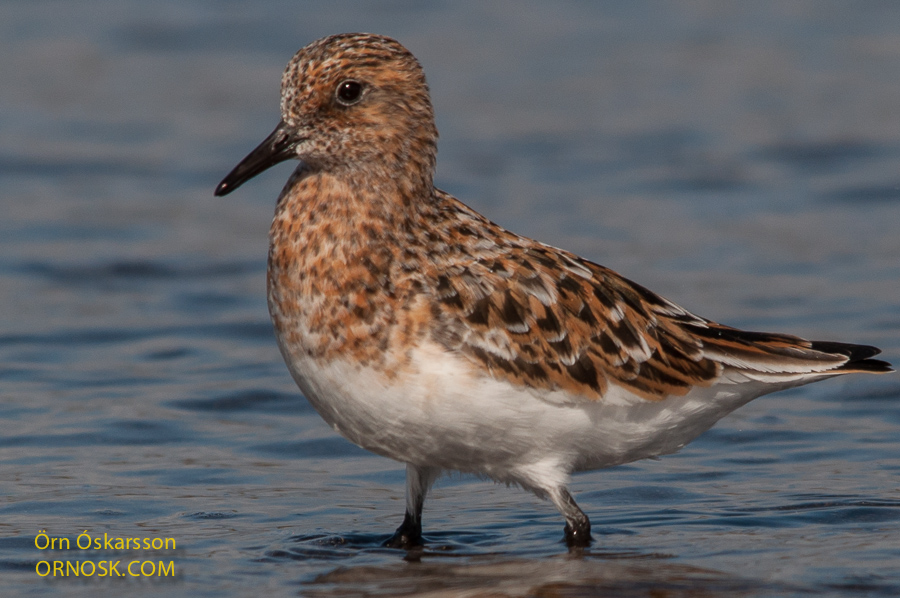
The Sanderling (Calidris alba) is a small wader, quick in movements, and only a guest in Iceland in the spring. It has a stopover here in May on its way to Northeast Greenland where it breeds. Its winter grounds are in West Europe all the way south to Namibia in West Africa.
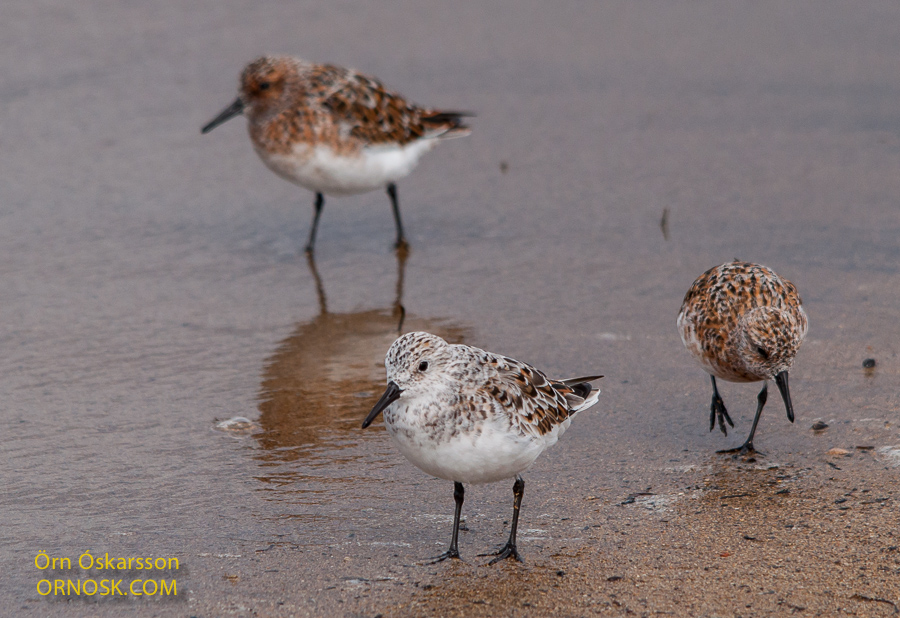
It is estimated that around 25,000 birds stopover here, mainly on the Southwest coast. The photos are taken near Eyrarbakki, South Iceland.

